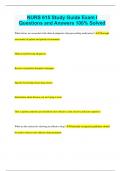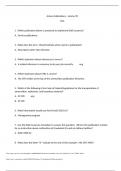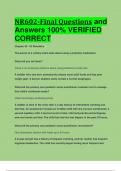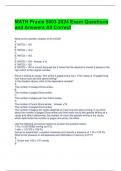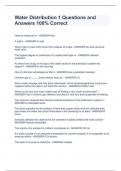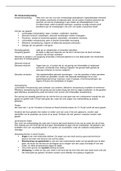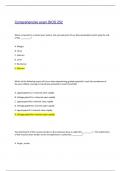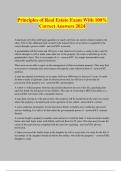Summary
Summary AQA a level biology year 1 mark points for every topic
A document with every past mark point for every topic in all of AQA a level biology year 1. Made using mark schemes for all the exam papers from 2016 (new spec), 4 different textbooks, using resources from exam pro and assistance from examiners for the 2024 papers.
[Show more]




